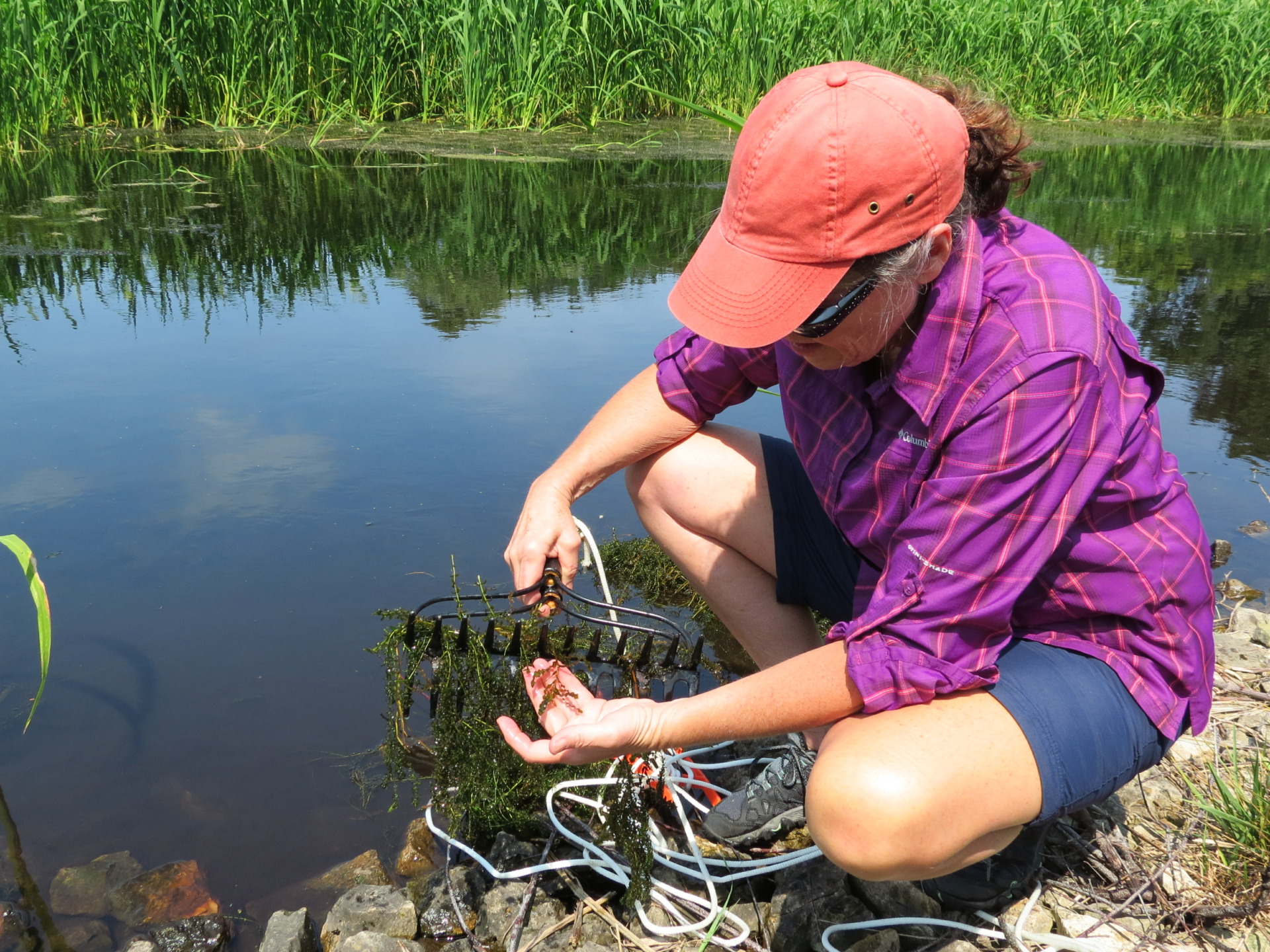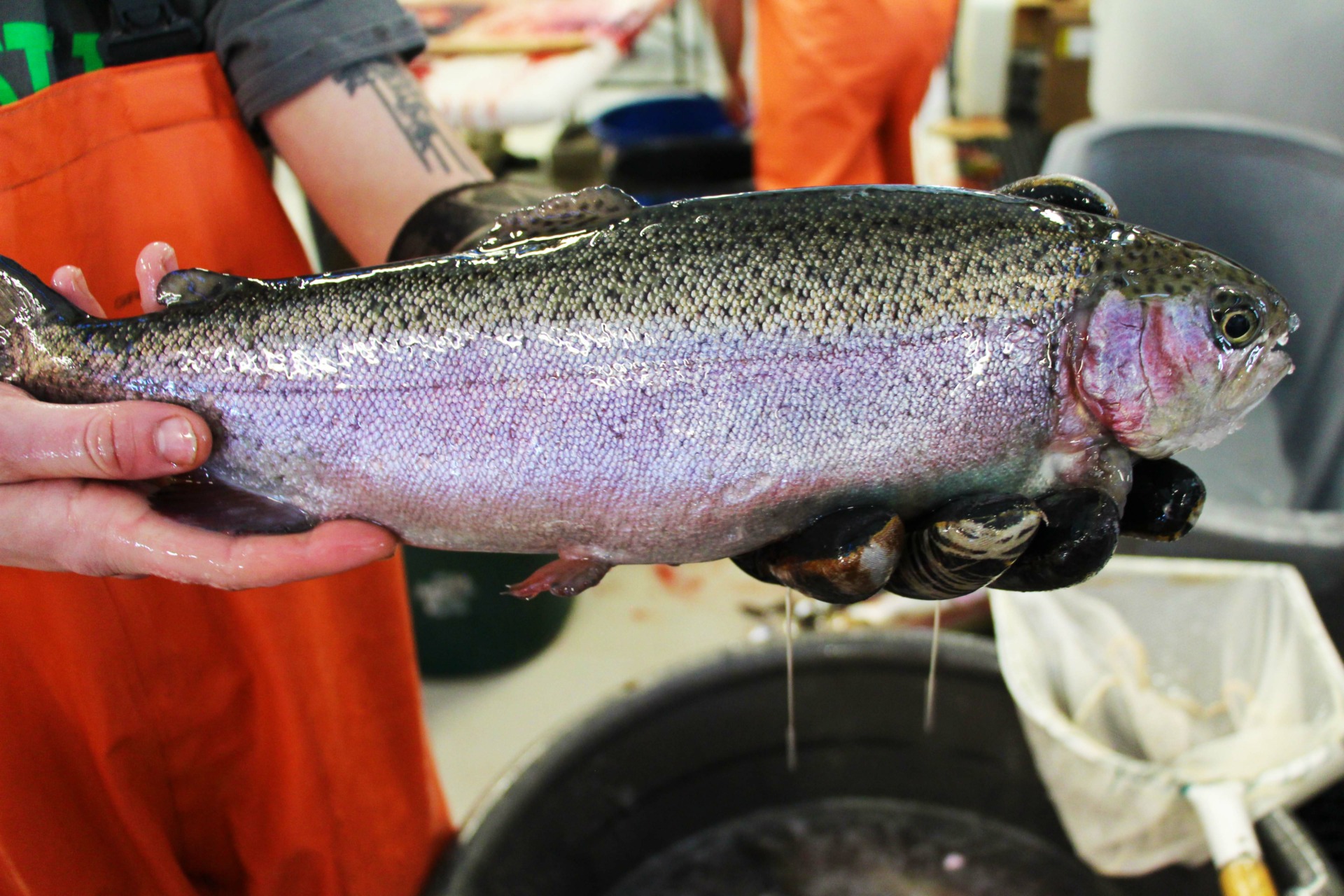With all the work going on to restore habitat in the St. Louis River Estuary, organizations would be remiss if they didn’t also address a man-made killer that lurks there: monofilament fishing line. That’s just what the St. Louis River Alliance of Duluth, Minn., is doing.
Wildlife can get caught and tangled in discarded or lost fishing line, sometimes leading to death. This spring, the Alliance began a program to install monofilament recycling bins at public boat landings along the estuary in Duluth and Superior, Wis. They sent out a call for cooperation and support to several local organizations, and organized adult and youth groups to participate in an “Adopt-A-Bin” program.
Wisconsin Sea Grant heeded the call by offering six bins that were donated by the NOAA Marine Debris Program a few years ago. The bins look more like small ship smokestacks than boxes. They are comprised of wide white PVC pipe tubing with a curved opening on top. Bill Majewski with the Alliance outfitted the tubes with a special wooden door that keeps birds from using the bins for nesting and deters people from throwing trash inside. The organization also created “Reel in and Recycle” stickers to let boat landing visitors know what the bins are for.
The donated bins were installed by Jill DiDomenico of the Alliance and her homegrown work crew (her children) in Superior last week. Anglers will notice them at Loon’s Foot Landing, Arrowhead Pier, Billings Park, and on Barker’s Island at the public boat launch, the dock by the Wisconsin Sea Grant/Lake Superior Reserve office, and the fishing pier along the Osaugie Trail on the mainland across from the office.
If you find discarded fishing line at any of these sites, please look for the bin and do your part to keep the estuary clean!





